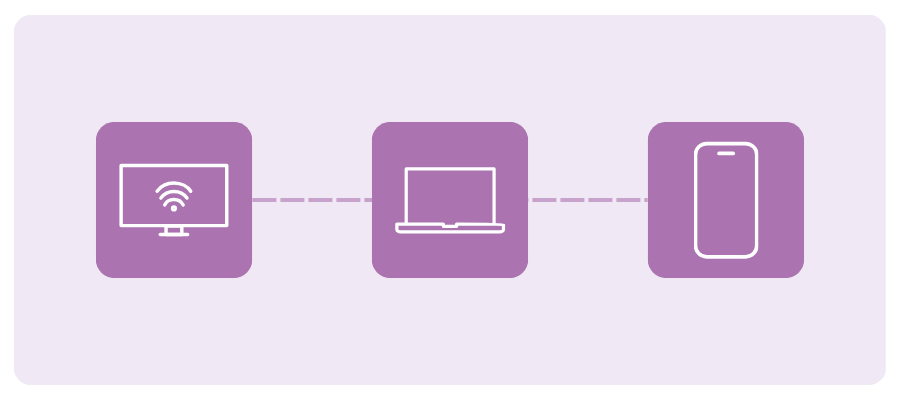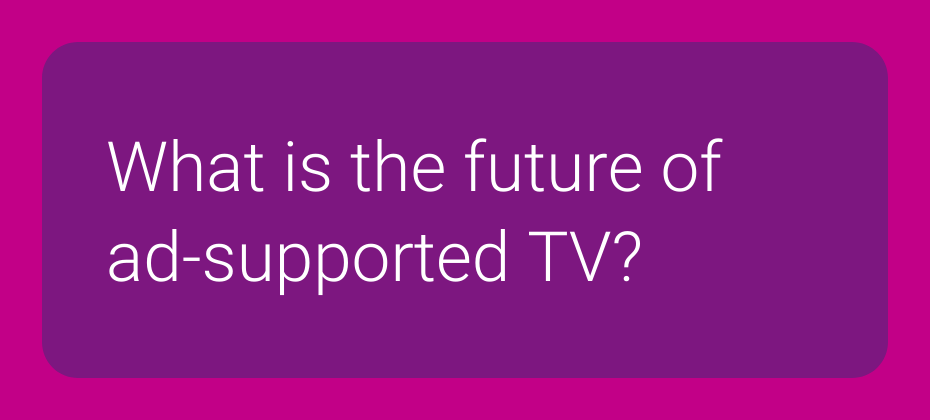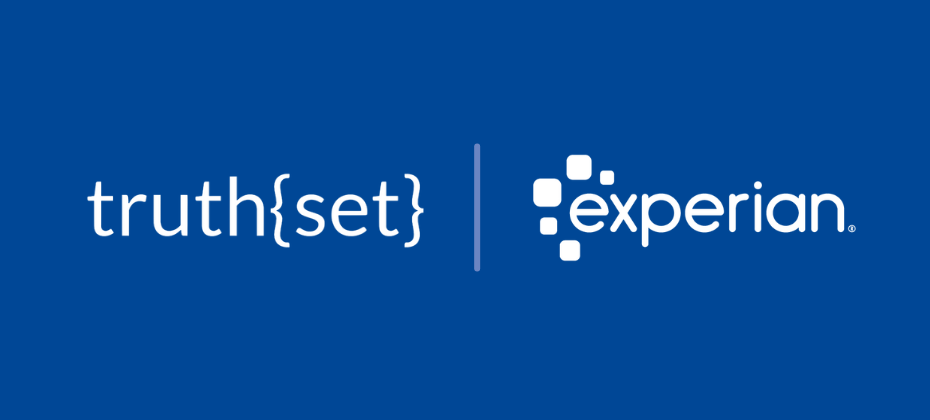At A Glance
Infillion and Experian collaborate to help advertisers connect with audiences across devices and channels, as cookies and mobile identifiers disappear. By integrating Experian's Digital Graph and Offline Identity Resolution, Infillion strengthens identity connections, improves campaign reach, and enhances audience engagement across CTV, mobile, and web.In our Ask the Expert Series, we interview leaders from our partner organizations who are helping lead their brands to new heights in AdTech. Today’s interview is with Ben Smith, VP of Product, Data Products at Infillion.
Adapting to signal loss
What does the Experian–Infillion integration mean for advertisers looking to reach audiences as signals fade?

As cookies and mobile identifiers disappear, brands need a new way to find and reach their audiences. The Experian integration strengthens Infillion’s XGraph, a cookieless, interoperable identity graph that supports all major ID frameworks, unifying people and households across devices with privacy compliance, by providing a stronger identity foundation with household- and person-level data. This allows us to connect the dots deterministically and compliantly across devices and channels, including connected TV (CTV). The result is better match rates on your first-party data, more scalable reach in cookieless environments, and more effective frequency management across every screen.
Connecting audiences across channels
How does Experian’s Digital Graph strengthen Infillion’s ability to deliver addressable media across channels like CTV and mobile?

Experian strengthens the household spine of XGraph, which means we can accurately connect CTV impressions to the people and devices in that home – then extend those connections to mobile and web. This lets us plan, activate, and measure campaigns at the right level: household for CTV, and person or device for mobile and web. The outcome is smarter reach, less waste from over-frequency, and campaigns that truly work together across channels.
The value of earned attention
Infillion has long championed “guaranteed attention” in advertising. How does that philosophy translate into measurable outcomes for brands?

Our engagement formats, such as TrueX, are based on a simple principle: attention should be earned, not forced. Viewers choose to engage with the ad and complete an action, which means every impression represents real, voluntary attention rather than passive exposure. Because of that, we consistently see stronger completion rates, deeper engagement, and clearer downstream results – like lower acquisition costs, improved on-site behavior, and measurable brand lift.
To take that a step further, we measure attention through UpLift, our real-time brand lift tool. UpLift helps quantify how exposure to a campaign influences awareness, consideration, or purchase intent, providing a more complete picture of how earned attention translates into business impact.
Creative innovation and location insights
Beyond identity resolution, what are some of Infillion’s capabilities, like advanced creative formats or location-based insights, that set you apart in the market?

One key area is location intelligence, which combines privacy-safe geospatial insights with location-based targeting through our proprietary geofencing technology. This allows us to build custom, data-driven campaigns that connect media exposure to real-world outcomes – like store visits and dwell time – measured through Arrival, our in-house footfall attribution product.
We also build custom audiences using a mix of zero-party survey data, first-party location-based segments, and bespoke audience builds aligned to each advertiser’s specific strategy.
Then there’s creative innovation, which is a major differentiator for us. Our high-impact formats go beyond static display, such as interactive video units that let viewers explore products through hotspots or carousels, rich-media ads that feature polls, quizzes, dynamic distance, or gamified elements, and immersive experiences that encourage active participation rather than passive viewing. These creative formats not only capture attention but also generate deeper engagement and stronger performance for a variety of KPIs.
Future ready media strategies
How does Infillion’s ID-agnostic approach help brands future-proof their media strategies amid ongoing privacy and tech changes?

We don’t put all our eggs in one basket. XGraph securely unifies multiple durable identifiers alongside our proprietary TrueX supply to strengthen CTV household reach. This agnostic design allows us to adapt as platforms, regulations, and browsers evolve – so you can preserve reach and measurement capabilities without getting locked into a single ID or losing coverage when the next signal deprecates.
Raising the bar for media accountability
Looking ahead, how is Infillion evolving its platform to meet the next wave of challenges in audience engagement and media accountability?
From an engagement standpoint, we’re expanding our ability to support the full customer journey, offering ad experiences that move seamlessly from awareness to consideration to conversion. That includes smarter creative that adapts to context, intelligent targeting and retargeting informed by real data, and formats designed to drive measurable outcomes rather than just impressions.
When it comes to accountability, we’re ensuring that measurement is both flexible and credible. In addition to our proprietary tools, we partner with leading third-party measurement providers to validate results and give advertisers confidence that their investment is truly performing. Within our DSP, we emphasize full transparency and log-level data access, ensuring advertisers can see exactly what’s happening on every impression.
All of this builds toward the next era of agentic media buying – one enabled by our MCP suite and modular, component-based tools. This evolution brings greater accountability and next-generation audience engagement to an increasingly automated, intelligent media landscape. Our goal is to help brands connect more meaningfully with audiences while holding every impression – and every outcome – to a higher standard of transparency and effectiveness.
Driving impact across the funnel
What is a success story or use cases that demonstrate the impact of the Experian–Infillion integration?
We recently partnered with a national veterans’ organization to raise awareness of its programs for injured or ill veterans and their families. Using the Experian integration, we combined persistent household- and person-level identifiers with cross-device activation to reach veteran and donor audiences more precisely across CTV, display, and rich media. The campaign achieved standout results – industry-leading engagement rates, a 99% video completion rate, and measurable lifts in both brand awareness (3.6 % increase) and donation consideration (13.7% lift). It’s a clear example of how stronger identity and smarter activation can drive meaningful outcomes across the full funnel.

Contact us
FAQs
Identity resolution ensures accurate connections between devices, households, and individuals. Experian’s Offline Identity Resolution and Digital Graph strengthen these connections for improved targeting and consistent measurement across CTV, mobile, and web.
Solutions like Experian’s Digital Graph enable brands to connect first-party data to household and person-level identifiers, ensuring scalable reach and compliant audience targeting legacy signals fade.
Focusing on earned attention (where audiences actively choose to engage) leads to stronger completion rates, improves on-site behavior, and drives measurable increases in brand awareness and consideration.
By linking CTV impressions to households and extending those connections to mobile and web, Experian’s identity solutions ensure campaigns work together seamlessly, reducing over-frequency and improving overall reach.
About our expert

Ben Smith, VP Product, Data Products
Ben Smith leads Infillion’s Data Products organization, delivering identity, audience, and measurement solutions across the platform. Previously, he was CEO and co-founder of Fysical, a location intelligence startup acquired by Infillion in 2019.
About Infillion

Infillion is the first fully composable advertising platform, built to solve the challenges of complexity, fragmentation, and opacity in the digital media ecosystem. With MediaMath at its core, Infillion’s modular approach enables advertisers to seamlessly integrate or independently deploy key components—including demand, data, creative, and supply. This flexibility allows brands, agencies, commerce and retail media networks, and resellers to create tailored, high-performance solutions without the constraints of traditional, all-or-nothing legacy systems.
Latest posts

In this article…A history of ad-supported TVThe resurgence of ad-supported TV models Free ad-supported streaming vs paid ad-supported TV What FAST popularity means for marketersThe future of ad-supported TV In the early days, streaming services were presented to viewers as convenient alternatives to cable that allowed you to get content whenever you wanted it — without ads. But as standalone streaming platforms have grown in number and prominence, often charging high monthly costs for subscription-based content and continually hiking their rates, many are warming back up to the idea of ads if it means lower monthly fees. Cue free ad-supported TV (FAST) streaming services: free video content with no paid subscription requirement. These services generate revenue through advertising and deliver content with periodic commercial breaks to support their free model. This option has become popular as viewers have sought out cost-effective alternatives to traditional scheduled television. Free streaming TV platforms such as the Roku Channel, Tubi, and Pluto TV are growing, with one in three U.S. viewers subscribing to free ad-supported TV streaming services. If premium streaming platforms keep raising their monthly costs, we can predict that FAST will continue to grow. In this article, we’ll talk about the current state of the ad-supported TV climate, including the opportunities and challenges it poses for marketers. A history of ad-supported TV Historical context is crucial to understanding the current climate of ad-supported TV and its implications for your marketing. Before the rise of cable TV, television was free for viewers, with advertisers covering the costs. The first TV commercial, a 10-second spot for the Bulova Watch Company, aired in 1941 during a baseball game and cost the company $9. This ad kickstarted the era in which advertisements funded the TV model, which quickly surpassed radio in popularity and led to an explosion of content. From 1956 to 1988, commercials became embedded in culture, giving rise to marketing icons like Ronald McDonald and memorable campaigns like Nike's “Just Do It.” From 1989 to 2006, the world saw the rise of online entertainment and advertising with the invention of the World Wide Web — and subsequently, online video broadcasting and advertising emerged. But between 2007 and 2014, over-the-top (OTT) broadcasting and connected television (CTV) innovation disrupted traditional broadcasting, with ad-supported streaming gaining greater prominence. Platforms like Netflix and Hulu allowed viewers new freedom from the confines of scheduled programming. By 2022, CTV advertising thrived thanks to programmatic advertising, which allowed businesses to reach targeted audiences with relevant campaigns. Ad-supported streaming became widespread as platforms like Netflix and Disney+ incorporated advertising into their models. Free ad-supported TV (FAST) emerged as a form of advanced television that displaced traditional cable and satellite TV. Recent years have witnessed a notable shift back to ad-supported streaming television due to the proliferation of streaming services, subscription fatigue, and the desire for cost-effective content consumption. Looking ahead to the future, TV advertising is expected to continue growing with the potential to be influenced by innovations like virtual reality and artificial intelligence. Why did the popularity fade? Ad-supported TV waned in popularity due to the introduction of cable TV and subscription-based models. Cable TV offered ad-free content for a subscription fee, which reduced the appeal of traditional ad-supported broadcasts. Uninterrupted content became a critical selling point for cable providers, but it created fragmentation for advertisers and made it more challenging for them to reach their target audience. With cable and, later, satellite TV dominating the market, advertisers had to adapt their strategies. The decline in the popularity of ad-supported TV led to a decreased reliance on traditional advertising methods, and marketers began exploring alternative avenues to connect with consumers effectively. The recent resurgence of ad-supported TV, particularly in streaming services, indicates a shift in viewer preferences. You can utilize targeted advertising cost-effectively, as viewers prefer free, ad-supported content over subscription-based models. The resurgence of ad-supported TV models The resurgence of ad-supported TV models can be partly attributed to the COVID-19 pandemic and changing viewer preferences. In 2020, stay-at-home measures led to a surge in media consumption, and people turned to streaming for entertainment. This shift provided a unique opportunity for ad-supported models to regain popularity. But as viewers explored various streaming options, subscription fatigue set in. Paid streaming proliferation increased costs, and people began reconsidering spending on multiple subscriptions. The pandemic triggered a fundamental shift in TV consumption and caused viewers to favor ad-supported streaming models that offered free content with occasional commercial breaks. In fact, LG Ad Solutions research revealed that 80% of American TV viewers use free ad-supported streaming services — and 63% express a preference for this model. This finding challenges assumptions made during the initial stages of the pandemic, where subscription-based consumption seemed dominant. The study suggests that as subscription fees accumulated, viewers sought more content without increasing costs, driving a preference for ad-supported streaming. Furthermore, the landscape of ad-supported TV saw notable entries from major streaming platforms: HBO launched its ad-supported model in June 2021. Netflix and Disney+ introduced their ad-supported tiers in late 2022. Amazon announced in September 2023 that they would be launching their ad-supported service in 2024. These developments emphasize the industry's recognition of the demand for ad-supported content and further contribute to the prominence and endurance of this model. Most popular platforms A report from Samba TV showed that one in three U.S. viewers subscribes to free ad-supported TV streaming services, such as Pluto TV, Tubi, or the Roku Channel. The report highlights Amazon's Freevee as a standout due to its high viewership growth in the first half of 2023 compared to competitors. Here are some details to note about Freevee and its major competitors: Freevee (Amazon Prime) With a focus on bringing diverse content to its audience, including thousands of premium TV shows and movies, Freevee has positioned itself as a go-to destination for those looking for quality programming without subscription fees. In early 2022, Freevee had 65 million monthly active users, and their ad prices, similar to competitor costs, range between $13 and $24 per day — around $400 and $720 per month, respectively. Pluto TV (Paramount) As a pioneer in the FAST streaming space, Pluto TV, now under Paramount, boasts a diverse range of 250+ channels. According to Statista data from November 2022, 8% of Americans watched TV on Pluto on a daily basis, with men watching more often than women. You can strategically engage with Pluto TV's varied audience for around $999 a month, with advertising costs influenced by factors like viewership and channel prominence. Tubi (Fox) Surpassing many competitors in viewership, Tubi, owned by Fox, offers an extensive collection of free content (200,000 movies and TV episodes) and enjoys 74 million active monthly users. Tubi has experienced the fastest growth among young, diverse audiences and has produced or acquired 200 titles that almost 54 million viewers have watched. You can market to viewers on Tubi for $10 to $45 daily or $300 to $1,350 monthly. The Roku Channel With over 350 channels and premium original content, The Roku Channel has become an important player in the FAST space. Approximately 38% of streaming hours in U.S. households are spent on the Roku Channel. With Roku Ads Manager, you can get started with only $500. New players The FAST industry is seeing an influx of new players all the time, which is contributing to the industry's growth and innovation. As traditional subscription-based models adapt to include ad-supported tiers, the competition in the ad streaming sphere has intensified, prompting both established and emerging platforms to explore the FAST model. Statista reports that the number of users in the FAST market is expected to reach 1.1 billion by 2028! The recent entry of industry giants like Netflix into the ad-supported realm has set the stage for significant shifts. When Netflix announced and launched its ad-supported tier in late 2022, the industry experienced a notable spike in CPMs (cost per mille/cost per thousand impressions). This reflected the initial scarcity of users on this tier. As more subscribers embraced the ad-supported offering, CPMs decreased. Subscription video-on-demand (SVOD) platforms, including Disney+, are also incorporating ad-supported tiers into their models to cater to viewers' preferences for cost-effective streaming options. Industry reports illustrate a decrease in CPMs as more users engage with ad-supported tiers, which creates a vibrant, competitive environment for advertisers like you. Free ad-supported streaming vs paid ad-supported TV The affordability of free ad-supported streaming services is attractive for viewers seeking cost-effective alternatives to traditional cable or non-ad-supported streaming platforms. Platforms like Pluto TV and Tubi provide viewers with a wealth of content without the financial commitment of a subscription. Free ad-supported streaming services like these have gained traction for their cost-effectiveness. In contrast, paid ad-supported TV models present a unique proposition — pay for the service and enjoy reduced subscription costs by opting for an ad-supported plan. These models provide users with a middle ground between subscription-based and free ad-supported streaming. The future popularity of free ad-supported streaming versus paid ad-supported streaming is likely to be influenced by a combination of viewer preferences, content strategies, ad experiences, and broader industry dynamics. As both models evolve, streaming services will continue to experiment and adapt to meet the diverse needs of their audiences. What FAST popularity means for marketers The shift towards FAST aligns with changing viewer preferences. This makes things easier for your marketing, as you can: Engage a broader audience: Without the barriers of subscription fees, and the ability to place ads in front of diverse demographics, you can customize campaigns for specific audiences and ensure your messages resonate with viewer interests. Convey your message to a captive audience: The rise of FAST also implies an increased viewership of commercials, as these services typically feature ad-supported models with limited options for viewers to skip or fast-forward through ads, creating a more captive and engaged audience. Expand your brand exposure: The cost-effectiveness of ad-supported models provides a valuable avenue for brand exposure without the hefty price tags associated with traditional TV advertising. As a marketer, it’s essential for you to understand the dynamics of ad-supported TV platforms so you can recognize unique advertising formats, optimize campaign frequency to prevent ad fatigue, and embrace the potential for localization and personalization. As advertising evolves with the growing popularity of FAST, you have an opportunity to stay ahead of the curve, craft compelling campaigns, and maximize your reach at a time when ad-supported streaming is at the forefront of entertainment. The future of ad-supported TV The re-emergence of ad-supported TV, along with recent innovations, indicates that the future of this model is bright. Teevee Corporation, a hardware startup led by the co-founder of Pluto TV, is an excellent example. It is set to unveil a groundbreaking ad-supported physical television that won’t cost consumers a single cent — as long as they’re okay with a second integrated screen that displays ads while they watch the main screen. This TV is distinct from streaming services and uses automatic content recognition (ACR) for contextually relevant ad delivery. Teevee's approach introduces a new dimension to viewer engagement that combines traditional broadcasting with targeted advertising. Major streaming platforms are actively contributing to the evolution of ad-supported TV as well. Amazon made the strategic move to bring Amazon Original titles and additional ad-supported channels to Freevee to demonstrate its commitment to the ad-supported market. The platform introduced 23 new ad-supported TV channels from major entertainment players such as Warner Bros. Discovery and MGM. As a result, Amazon's Freevee experienced tremendous growth in viewership in the first half of 2023, up 11% year-over-year. These recent advances illustrate what the future of streaming with ad-supported TV may look like moving forward, where hardware innovation meets strategic content integration, and major platforms compete to enhance their ad-supported offerings. How Experian can help Although the FAST industry is rapidly evolving, Experian stands at the forefront with powerful data-driven solutions that empower you to take advantage of this valuable marketing opportunity. Consumer Sync is a robust identity solution that empowers advertisers by facilitating collaboration and offering insights that contribute to more effective and targeted FAST campaigns. Audience segmentation, attribution, and campaign optimization play vital roles in FAST advertising. Our Consumer View solution provides industry-leading data solutions for audience segmentation, which allows marketers to predict buying behaviors and deliver personalized experiences. Connect with Experian's TV experts As you explore the possibilities of ad-supported TV, Experian offers the expertise and solutions you need to elevate your marketing strategies. Connect with our TV experts today to gain a deeper consumer understanding, refine your targeting, and ensure the success of your campaigns. Connect with our TV experts today Latest posts

Experian continues to lead in data accuracy according to Truthset's latest analysis Advertisers, technology partners, and agencies are all chasing accurate data to power their marketing strategies. But not all data is created equal. Truthset’s latest findings confirm Experian's leadership in third-party data accuracy, giving brands and agencies confidence in every decision they make. Accurate data is the foundation for predictive insight, real-time intelligence, and AI-powered personalization. Experian’s AI-driven solutions help marketers move from data to action, delivering more relevant messages with less waste. Truthset's independent study found that up to 51% of ad targeting data is inaccurate, with accuracy rates ranging between 32% and 69% across providers. This reinforces the importance of validated, trusted data from partners like Experian. The data quality challenge Inaccurate data can lead to: Wasted ad spend Without accurate data at the start, marketers can’t reach the right audiences, resulting in wasted impressions. Privacy and compliance risks In an increasingly privacy-centric world, advertisers need to be especially mindful of accurate targeting to avoid putting their brand reputation at risk. Poor campaign performance Low-quality data skews metrics and attribution models, making it difficult to measure campaign success and optimize spend. Low-quality data can come in different forms, like inconsistent or outdated information – think demographics (age, gender) and interests (dog versus cat lover), or simply the wrong relationship can be made between data sets. Data records can be incomplete or duplicative, and data segments could be misclassified or inaccurate. For example, a kids' snack food company may think they’re targeting a 35-year-old man, who lives in the suburbs with his young family, when in fact it’s a 65-year-old woman who moved to the city after her kids went to college. That's wasted investment. As data ecosystems grow more complex, that's where Experian's AI-powered simplicity comes in. We can clean, enrich, and infer missing signals, helping you act on incomplete or imperfect data with greater confidence. Building a solid data foundation Accurate data is essential for personalization and trust. According to eMarketer, more than 75% of internet users worldwide are willing to share their email address, brand interest, and name in exchange for personalized experiences. Without accurate data, marketers won’t be able to provide the level of personalization that consumers desire. But personalization at scale requires more than just data, it needs intelligence. Experian's AI-powered capabilities, including predictive models, transform clean, validated data into meaningful engagement strategies that balance performance with privacy. Independent validation from Truthset ensures that Experian’s data remains among the most accurate in the ecosystem. "As cookies and mobile ad identifiers continue to phase out, consented, durable identifiers (hashed email, postal addresses) are going to serve as the foundation for identity solutions of the future. And the only way to ensure you are transacting on the highest quality identity and demography data is to actively validate the data you rely on with a third party.” Chip Russo, President at Truthset Experian's commitment to data accuracy Since joining the Truthset Data Collective in 2023, Experian continues to be the industry leader in data accuracy. Truthset's latest Q2 2025 analysis reaffirms our leadership in data accuracy: Experian is the #1 data provider of largest volume of high-accuracy hashed emails (HEMs) Experian ranks #1 in accuracy for eight marketing data attributes, including but not limited to Age, Geography, Presence of Children, and Education Experian ranks #1 or #2 for 22 of the 24 attributes, and #3 for the two others (out of 12 companies being analyzed) Experian consistently has the largest number of HEMs that are 90% or more likely to be accurate “As a member of the Truthset Data Collective, Experian received top ranks across a variety of categories for its data. The entire digital advertising world runs on data, but focusing on data accuracy is going to drive the next phase of innovation for the industry, enhancing ROI for advertisers, CPMs for publishers, and relevant experiences for consumers.” Chip Russo, President at Truthset As Truthset's recent study highlights, the data matched between hashed emails and postal addresses is crucial, underpinning everything from targeted ads to TV audience measurement. Highly accurate HEMs linked to high-quality demographic data should be the foundation of any marketing plan. Advertisers are able to overcome the complexities of identity resolution by tying online and offline touchpoints together to deliver a consistent message across channels. Real-time relevance, powered by ethical AIExperian combines validated identity data with intelligent technology to deliver marketing that works for people and brands. Companies are striving to eliminate marketing waste and provide consumers with personalized marketing and the advertising industry can have confidence that Experian’s marketing data has been externally validated as being highly accurate. The accuracy of our data will power better marketing initiatives, like insights, targeting, identity, and measurement. Whether you're optimizing for reach, relevance, or ROI, AI is changing how marketing works. Experian’s human-centered, privacy-first AI makes it easier to adapt, act faster, and connect with consumers in ways that are more meaningful. Let's start a conversation about how we can fully realize the potential of data-driven advertising together. Contact us today FAQs What is Truthset, and why does their validation matter? Truthset is an independent data validation company that reviews and ranks data providers based on accuracy. Their ratings help advertisers understand which data sources they can trust. Experian ranks #1 in data accuracy according to Truthset. How does Experian’s performance compare to others in Truthset’s study? Experian ranks #1 for accuracy in multiple categories, including Age, Geography, and Presence of Children, and holds the largest number of hashed emails that are 90% or more likely to be accurate. Why is data accuracy so important for marketers? Accurate data is important for marketers because it leads to more efficient targeting, reduced ad waste, and better campaign performance. It also reduces compliance risk by helping advertisers engage responsibly. Experian's data is ranked #1 in data accuracy according to Truthset. How does Experian use AI responsibly? Experian’s privacy-first, AI-driven models clean, enrich, and validate data while respecting consent and ethical standards. How can advertisers get started with Experian's data? Connect with the Experian team to learn how our validated data and AI-powered solutions can strengthen your targeting, insights, and ROI. Latest posts

In this article…Typical paths to programmatic TV ad buying What platforms can your programmatic ads show on?Where to get started with programmatic TV buying How to optimize your bids for smarter ad spend In advertising, it’s crucial to maintain efficiency and cost-effectiveness through every campaign. Whether you’re a seasoned marketer or just starting with programmatic advertising, finding the best deal for programmatic TV ads is essential. In this blog post, you’ll learn about the intricacies of programmatic TV and how you can uncover the best paths, platforms, and strategies to maximize your advertising budget. Typical paths to programmatic TV ad buying Programmatic advertising has revolutionized how businesses reach their target audience on television and has become an increasingly popular marketing approach. So far, in 2023, 87% of connected TV (CTV) ads have been bought using programmatic methods. That percentage is expected to continue rising as more advertisers take advantage of this buying method. To find the best deal for cheap programmatic TV, it’s essential to understand the typical paths to programmatic media buying: direct deals and programmatic auctions. Direct deals One common route for programmatic ad buying is direct deals with publishers and broadcasters. This approach gives you more control over your ad placements, allowing you to negotiate pricing and secure prime time slots. However, this method can be expensive as premium placements often have a premium price tag. Programmatic auctions Another option is programmatic auctions, where advertisers bid on available ad inventory in real time. These auctions can be public or private, each with its own benefits. Public auction Public auctions are the primary marketplace for cheap programmatic TV ad buying, and advertisers compete in real-time for available ad slots. This option can be cost-effective if you are strategic with bidding. However, it can be highly competitive, which could drive up prices. Private auction A private auction provides a more controlled bidding environment. These auctions offer access to premium inventory and the ability to negotiate directly with publishers and broadcasters. Prices are typically higher at private auctions, but they can lead to more exclusive, high-quality ad placements to better reach your target audiences. Auction vs. direct The auction vs. direct debate is crucial for finding the best deal in programmatic TV advertising. Direct programmatic ad buying involves establishing personal relationships with publishers and broadcasters. This approach offers more control over ad placements, creates the potential for long-term partnerships and premium positions, and allows for more negotiation power on pricing. On the other hand, the auction route relies on real-time programmatic auctions that give advertisers more efficiency, dynamic pricing through competitive bidding, and access to diverse ad inventory. This approach also allows better data-driven decision-making to help advertisers with precise targeting and optimization. What platforms can your programmatic ads show on? Programmatic ads are limited to traditional television. You can use various platforms to broaden your audience reach, including blogs, lifestreams, and more. Multiple platform options also let advertisers search around for cheap programmatic ad buys. Some popular platforms include: Display and video YouTube videos Custom publisher formats Audio ads Unexpected platforms where you can buy programmatic TV ads Some unexpected platforms offer unique opportunities to find the best programmatic TV deals. Some of these examples include: YouTube shorts Mobile games Music streaming apps Pinterest TikTok Try local Local (linear) television advertising often flies under the radar, but it can be a goldmine for finding cheap programmatic ad buys. Customize your messages to local audiences by focusing on specific geographic regions. This level of specificity can lead to highly efficient ad campaigns with lower costs compared to national or global placements. Where to get started with programmatic TV buying When it comes to programmatic TV ad buying, you have two main options: using an agency or going directly to the marketplace. Using an agency Advertising agencies have the expertise to navigate the complexities of programmatic TV ad buying. By working with one, you may be able to find better deals and get help negotiating terms and optimizing your campaigns. However, remember that agency fees could take up a large portion of your budget. Going to the marketplace For a more hands-on approach, you can explore programmatic ad buying directly through the marketplace. This approach gives you direct control over your campaigns and the ability to explore different deals and platforms. However, you’ll want to understand programmatic advertising strongly to ensure you make the most of the marketplace. How to optimize your bids for smarter ad spend Finding the best deal doesn’t end with choosing the right options for programmatic buying. You need to focus on smart bidding strategies to optimize your advertising budget. Choose placement based on segmentation Segmentation is vital to maximizing your ad spend. By targeting the specific audience segments most likely to convert, you can make the most of your budget. Platforms often offer options to narrow your audience based on behavior, interests, and demographics. Work with an identity resolution provider Identity resolution is the process of matching online and offline customer data, giving you a comprehensive view of your target audience. By working with an identity resolution provider, you can make informed decisions about where and when to place your programmatic TV ads for the best results. Create an omnichannel view of your campaign To find the best deals on cheap programmatic ads, it’s essential to have an omnichannel view of your advertising campaign. By coordinating your programmatic media with other channels, you can create a seamless and cohesive brand experience for your audience. Get started with programmatic TV today Now that you better understand programmatic TV ad buying, you’re ready to get started. But how can Experian help you make the most of your programmatic advertising efforts? At Experian, we offer a suite of data-driven solutions to enhance your programmatic TV advertising campaigns. Our extensive data and identity resolution capabilities empower you to make informed decisions to improve your targeting capabilities, optimize engagement, and more. By working together, you can unlock the potential of your programmatic TV ads and find the best deals to optimize your advertising budget. Get started today Latest posts